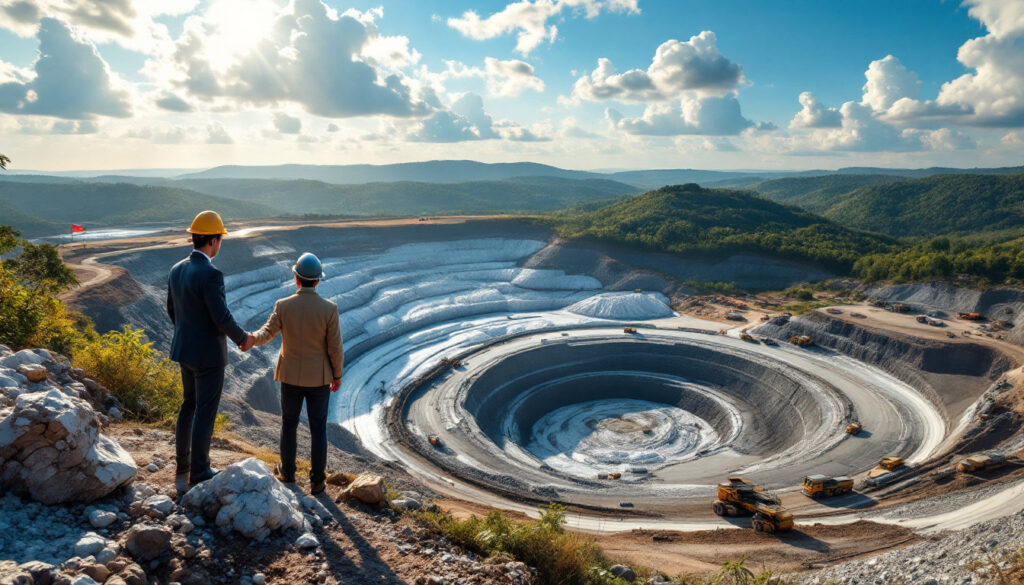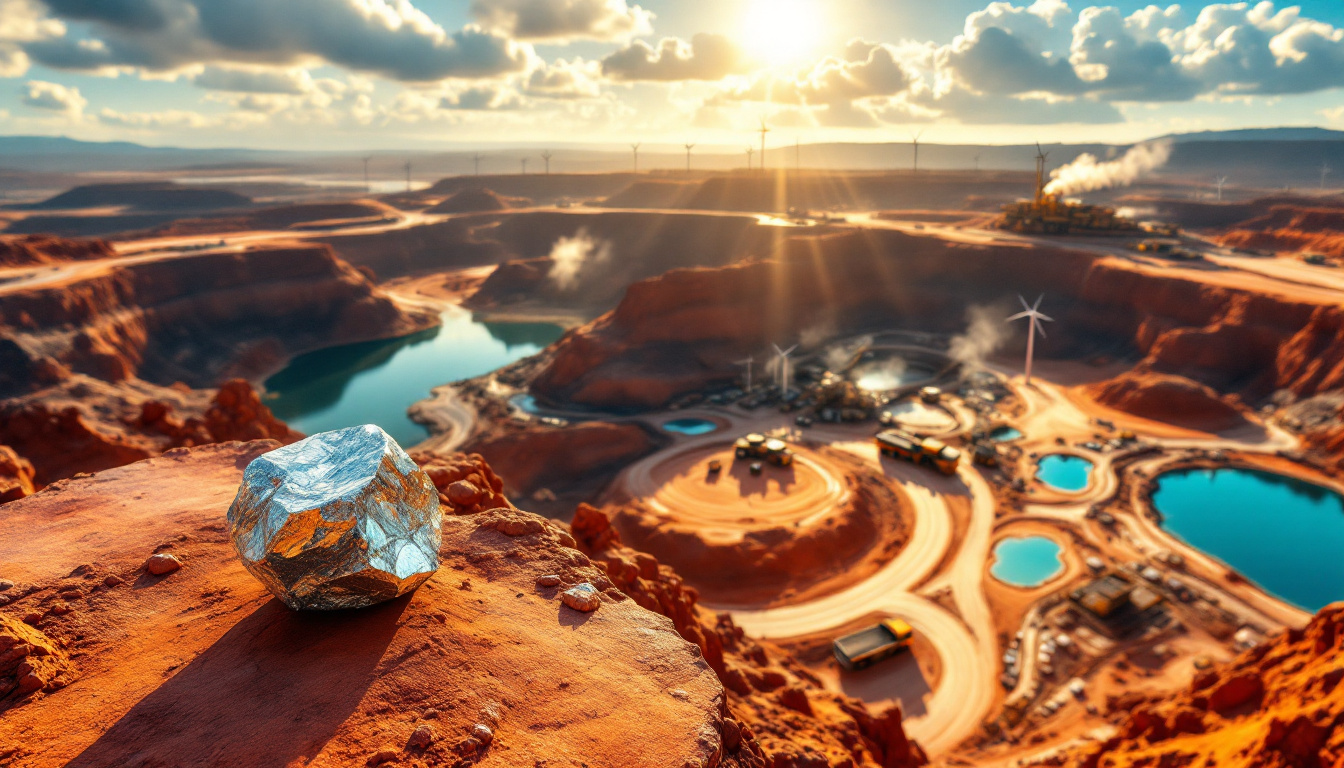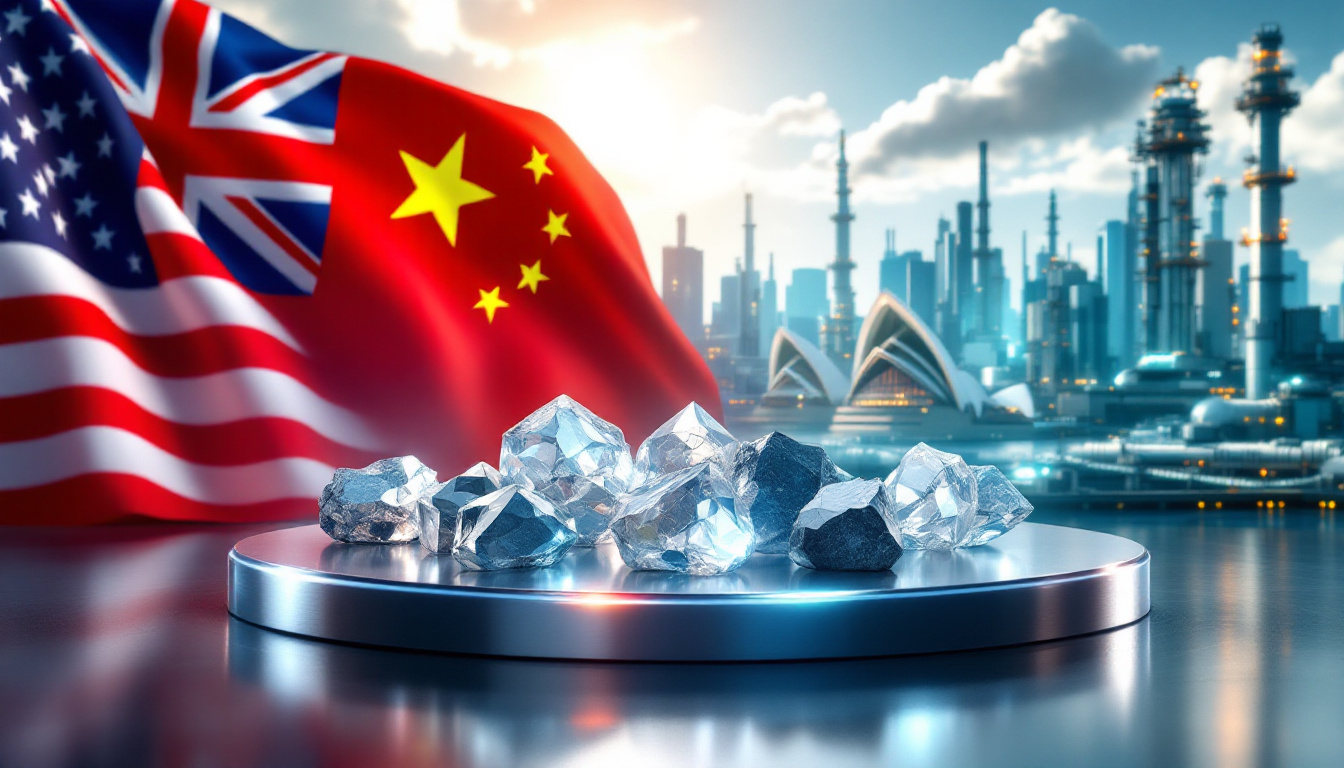Rio Tinto's Strategic Move: Negotiations with DRC for Roche Dure Lithium Development
Rio Tinto, one of the world's largest mining conglomerates, has initiated high-level discussions with the Democratic Republic of Congo (DRC) government regarding the development of the Roche Dure lithium deposit. These negotiations aim to transform what experts consider one of the world's largest hard rock lithium deposits into a productive mining operation. According to sources familiar with the matter, while talks are advancing, they remain in relatively early stages with outcomes still uncertain.
The mining giant's interest in DRC's lithium resources comes amid growing global demand for battery metals essential for the green energy transition. This strategic move aligns with Rio Tinto's strategic shift towards clean energy investments and broader ambition to position itself as a dominant force in the battery metals sector, particularly lithium, which has become increasingly crucial for electric vehicle manufacturing.
Understanding Rio Tinto's Interest in the DRC Lithium Market
Rio Tinto's engagement with the DRC government represents a significant pivot in their resource acquisition strategy. The company has historically maintained a conservative approach to high-risk jurisdictions but appears to be reassessing this stance given the exceptional quality of the Roche Dure deposit and growing competition for premium lithium assets globally.
Industry analysts suggest Rio Tinto's interest in the DRC lithium sector reflects an acknowledgment of shifting geopolitical dynamics around critical minerals. With Western nations increasingly concerned about China's dominance in battery supply chains, major mining houses are under pressure to secure alternative sources of critical minerals.
"The DRC's lithium deposits represent some of the highest-grade, untapped resources globally," notes mining analyst Jérôme Bastenière. "For a company like Rio Tinto, which needs to rapidly expand its lithium portfolio, Roche Dure presents an opportunity that might outweigh the traditional risk assessment metrics."
What Makes the Roche Dure Deposit Significant?
Resource Potential and Technical Specifications
The Roche Dure lithium deposit boasts impressive technical specifications that make it particularly attractive to major mining companies. The deposit contains estimated mineral resources of approximately 400 million tonnes at an average grade of 1.65% lithium oxide. This exceptional grade places it among the highest-quality hard rock lithium deposits globally.
Beyond lithium, the deposit contains valuable by-products, including approximately 715 parts per million (ppm) of tin and 34ppm of tantalum (as reported in May 2019). These secondary minerals could significantly enhance the project's economics, providing additional revenue streams beyond lithium carbonate or hydroxide production.
The deposit's location near the Manono lithium project in south-eastern Congo offers potential infrastructure synergies, though the region's remote nature presents logistical challenges that would require substantial investment to overcome.
Strategic Importance in Global Lithium Supply
Roche Dure represents a potential game-changer in global lithium market dynamics. The deposit's exceptional size and grade could potentially position the DRC as a major player in global lithium production, currently dominated by Australia, Chile, and China.
For Rio Tinto, successfully developing this deposit would catapult the company into the top tier of global lithium producers. This aligns with their stated strategy of focusing on "future-facing commodities" essential for decarbonisation and renewable energy technologies.
The deposit's development would also have significant implications for lithium pricing and supply security. Metallurgical testing indicates the deposit contains spodumene with favorable processing characteristics, potentially yielding a high-quality lithium product suitable for battery-grade applications.
Navigating Complex Legal and Political Challenges
Ongoing Disputes Over Mining Rights
The path to developing Roche Dure is complicated by ongoing legal disputes over mining rights. The license is currently subject to international arbitration proceedings initiated by AVZ Minerals, an Australian company that previously held rights to the deposit.
The situation became contentious when the DRC government canceled AVZ Minerals' rights and redistributed them, allocating the northern section of the deposit to Chinese mining conglomerate Zijin Mining Group. This reallocation triggered legal action, with an International Chamber of Commerce tribunal ordering DRC's state-owned mining company Cominière to pay €39.1 million ($42.4 million) plus interest to AVZ Minerals.
This complex legal landscape presents significant challenges for Rio Tinto, which would need to ensure any agreement with the DRC government provides incontestable title and rights before committing substantial capital to development.
Geopolitical Considerations in the DRC
The DRC government has explicitly stated its interest in attracting Western investment to counterbalance Chinese dominance in its mining sector. This strategic pivot creates a potentially favorable environment for Rio Tinto's negotiations.
"The DRC is increasingly aware of the strategic leverage its mineral wealth provides in international relations," explains political risk consultant Maître Kabongo. "By diversifying investment sources beyond Chinese companies, the government aims to strengthen its negotiating position and maximize returns from its natural resources."
The country is simultaneously exploring a minerals-for-security deal with the United States to support its ongoing fight against insurgencies, particularly in mineral-rich eastern regions. This broader geopolitical context could influence the government's approach to negotiations with Rio Tinto in talks with DRC to develop lithium deposit.
Rio Tinto's Battery Metals Strategy
Recent Strategic Moves in Lithium
Rio Tinto's pursuit of the Roche Dure deposit follows a series of strategic investments in the lithium sector. Most notably, the company acquired Arcadium Lithium for $6.7 billion (£5.19 billion) in early 2024, signaling its serious commitment to building a substantial lithium business.
The company has also made significant investments in lithium assets in Serbia and Argentina, though these projects have faced varying degrees of regulatory and social license challenges. Rio Tinto's recent lithium expansion project in the Serbian Jadar lithium project, in particular, encountered significant opposition from environmental groups and local communities, resulting in permit delays.
This aggressive approach to lithium acquisition contrasts with the more cautious stance taken by some of Rio Tinto's major competitors, such as BHP and Glencore, which have been more hesitant to make major lithium investments despite acknowledging the metal's growing importance.
Potential Partnerships and Competition
Rio Tinto's interest in Roche Dure comes amid reports that KoBold Metals, a mineral exploration company backed by prominent investors including Bill Gates and Jeff Bezos, has also expressed interest in developing the deposit. This has led to speculation about potential collaboration between the two companies.
Industry sources suggest both companies are simultaneously exploring both collaborative approaches and independent involvement in the project. KoBold's expertise in applying artificial intelligence and machine learning to mineral exploration could complement Rio Tinto's extensive mining development and operational experience.
The competition for this asset underscores its exceptional quality and strategic importance in the global race to secure battery metals supply chains.
How Does This Project Fit into the Global Lithium Supply Chain?
The Role of DRC in Global Lithium Production
The DRC has established itself as the world's dominant supplier of cobalt, another critical battery metal, producing approximately 70% of global supply. However, the country has yet to develop its substantial lithium resources on a commercial scale.
The successful development of Roche Dure would establish the DRC as a significant lithium producer, potentially reshaping global supply dynamics currently concentrated in the "Lithium Triangle" countries of South America (Chile, Argentina, Bolivia), Australia, and China.
This diversification of supply sources would be welcomed by battery manufacturers and automakers who have expressed concerns about supply concentration and geopolitical risks in existing production regions. However, the DRC's own political instability and governance challenges present alternative risks that investors must carefully evaluate, according to global market insights on geopolitical dynamics.
Impact on Electric Vehicle Battery Production
The development of Roche Dure could have significant implications for electric vehicle battery production. With global lithium demand projected to increase by 400-500% by 2030, according to industry forecasts, new large-scale sources of high-quality lithium are urgently needed to prevent supply constraints and price volatility.
Battery manufacturers are increasingly concerned about securing long-term supplies of battery-grade lithium hydroxide and carbonate. Some have already begun entering into off-take agreements and strategic partnerships with mining companies to ensure supply security.
"The quality and scale of the Roche Dure deposit make it potentially suitable for producing battery-grade lithium materials," explains battery metals analyst Dr. Eleanor Harding. "This could make it particularly attractive for strategic partnerships with battery manufacturers or automotive companies looking to vertically integrate their supply chains."
Furthermore, understanding the crucial role of mining in the clean energy transition highlights why projects like Roche Dure are garnering significant attention from major industry players.
FAQs About Rio Tinto's DRC Lithium Project
What is the current status of the Roche Dure lithium project?
The project is currently in early-stage negotiations between Rio Tinto and the DRC government. These discussions are complicated by ongoing legal disputes over mining rights involving AVZ Minerals and other parties. Resolution of these legal issues would be necessary before any major development could proceed.
How does this project compare to other global lithium deposits?
With estimated resources of 400 million tonnes at 1.65% lithium oxide, the Roche Dure deposit ranks among the world's largest and highest-grade hard rock lithium resources. Its size, grade, and mineralogy (primarily spodumene) make it especially valuable compared to many other global deposits.
What challenges must be overcome before development can proceed?
Key challenges include resolving legal disputes over mining rights, establishing clear ownership, navigating the DRC's complex political environment, developing necessary infrastructure in a remote region, and securing the substantial investment required for project development. Environmental and social impact assessments would also be crucial given growing scrutiny of mining's ecological footprint.
What is the significance of Western mining companies entering the DRC lithium sector?
Western mining companies entering the DRC lithium sector represents a potential counterbalance to Chinese dominance in DRC mining operations. This diversification could strengthen the DRC's negotiating position with all foreign investors while potentially improving governance and environmental standards through competition. For Western economies, it represents an opportunity to diversify critical mineral supply chains away from Chinese control—a growing strategic priority for both the US and EU.
According to a recent Reuters report, securing access to the Roche Dure deposit would significantly strengthen Rio Tinto's position in the lithium market, positioning the company to benefit from innovative approaches to lithium production as the industry evolves.
Want to Catch the Next Major Mineral Discovery?
Discover why ASX mining discoveries like Rio Tinto's lithium initiatives can lead to exceptional market returns by exploring the Discovery Alert discoveries page, where our proprietary Discovery IQ model tracks and analyses the most promising opportunities before they hit mainstream attention.




